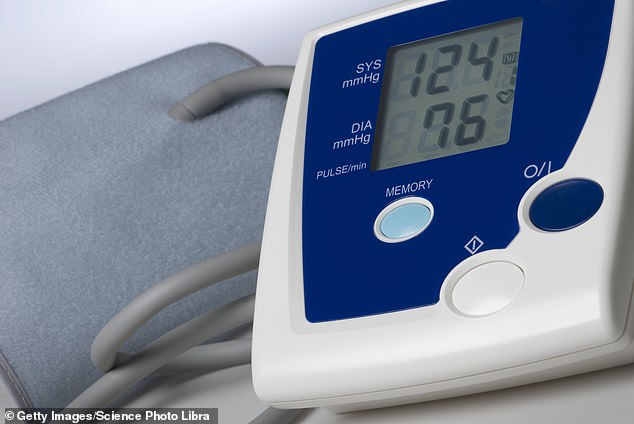A examine means that implementing decrease blood strain targets than at present in place may save hundreds of lives every year.
In response to official NHS steerage, the perfect strain is between 90/60 and 120/80 millimetres of mercury (mmHg).
Sufferers with hypertension are often handled with measures aimed toward lowering the systolic strain – the upper quantity displays the power at which the center pumps blood all through the physique – to 140mmHg.
However analysis reveals that decreasing it to 120mmHg will stop coronary heart assaults and strokes, and preserve safety.
1 / 4 of adults within the UK – 14.4 million individuals – undergo from hypertension, which will increase the chance of well being issues corresponding to coronary heart assault, stroke and vascular dementia.

A examine means that implementing decrease blood strain targets than at present in place may save hundreds of lives per yr (inventory picture)
Researchers studied greater than 11,000 individuals who have been at excessive threat of cardiovascular issues as a result of life-style components corresponding to diabetes, age and smoking.
Sufferers from 116 hospitals in China have been randomly assigned to 2 teams, aiming to scale back blood strain to under 120mmHg or to the usual therapy of 140mmHg.
They got blood pressure-lowering drugs and recommendation on train, then adopted up month-to-month for the primary three months after which month-to-month for each three months.
Their remedy was adjusted to take care of the specified ranges, then they have been adopted up greater than three years later.
Of the goal group with low blood strain, 9.7 p.c suffered a severe cardiac downside corresponding to coronary heart assault.
As compared, 11.1 per cent of individuals had a goal blood strain of lower than 140mmHg, in accordance with the findings printed in The Lancet.
The authors mentioned a decrease blood strain goal of lower than 120mmHg must be thought of for all sufferers at excessive cardiovascular threat, no matter their diabetes standing or historical past of stroke.

In response to official NHS steerage, the perfect strain is between 90/60 and 120/80 millimetres of mercury (mmHg) (inventory picture)
“Implementing this intensive therapy technique for high-risk adults is prone to save extra lives and cut back the general public well being burden attributable to coronary heart illness,” mentioned Dr. Jing Li of the Nationwide Coronary heart Illness Heart in Beijing.
The report comes after a examine in Britain discovered that fluctuations in blood strain are a significant component within the threat of coronary heart assault and stroke.
Earlier this yr, researchers at Imperial Faculty discovered that greater than half of the occasions occurred in sufferers whose blood strain was properly managed with remedy – under 140 mmHg – suggesting this restrict is insufficient.
However consultants say these findings don't imply everybody ought to take the drug.
Professor Nilesh Samani, former medical director of the British Coronary heart Basis, mentioned: 'It's additionally necessary to do not forget that blood strain might be improved by different means moreover remedy, corresponding to train and weight reduction.'
He mentioned that people who find themselves nervous about their blood strain ought to seek the advice of a physician.


